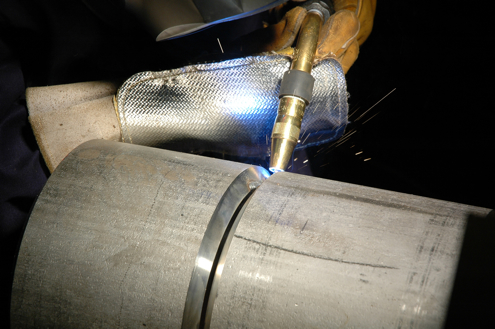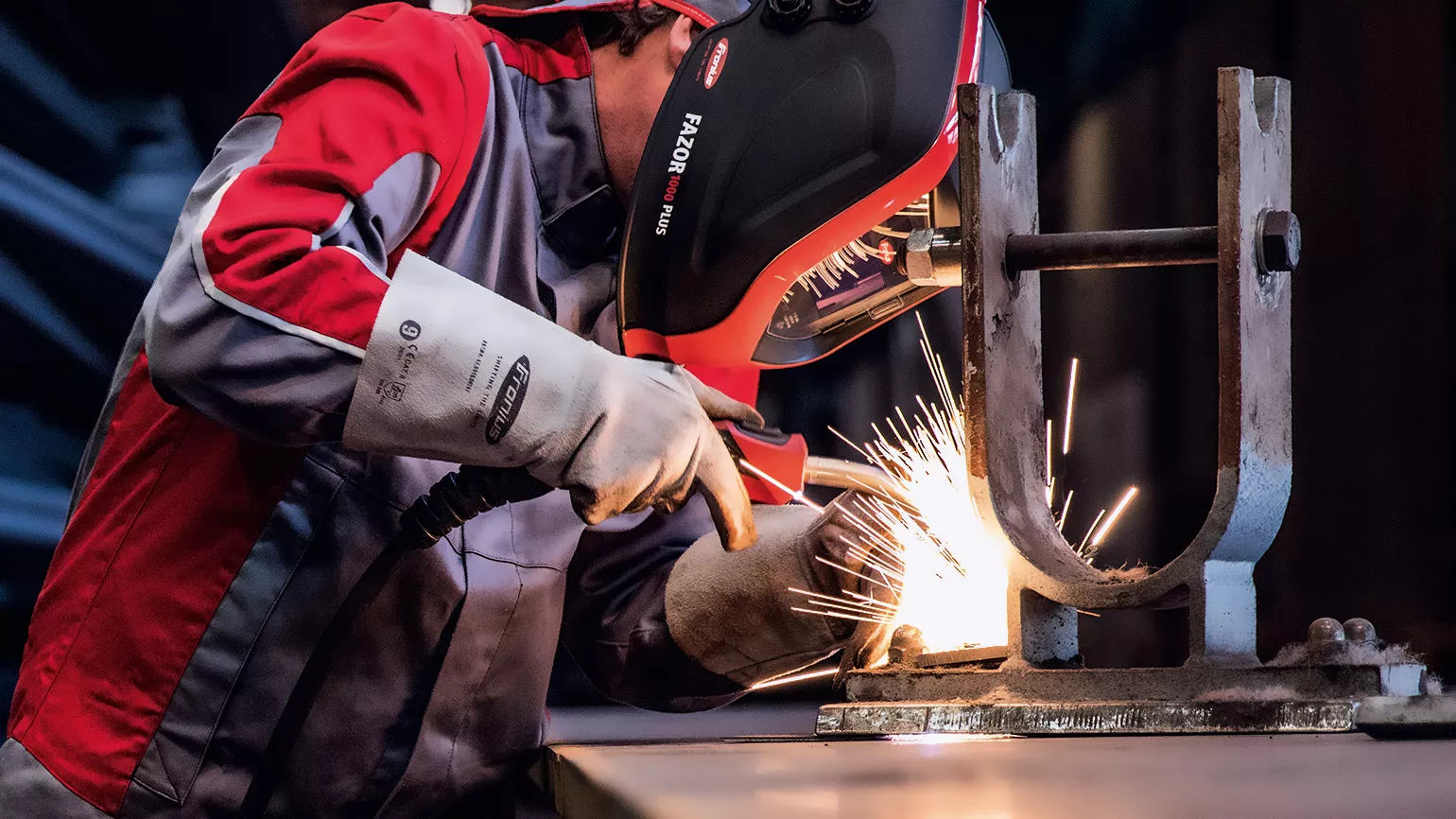Common Welding Fixing Issues and Exactly How to Address Them Efficiently
Welding repair services commonly come across a variety of concerns that can threaten the stability of the final product. Typical problems consist of poor infiltration, porosity, and misalignment, to name a few. Each defect provides special challenges that need certain methods for resolution. Understanding these concerns is necessary for welders intending to improve their abilities and end results. This discussion will certainly explore these usual welding repair service concerns and reliable approaches to address them.
Inadequate Infiltration
Inadequate penetration takes place when the weld metal fails to completely fuse with the base product, resulting in weak joints and prospective architectural failings. This problem usually originates from not enough heat input, inaccurate electrode angle, or improper welding speed. Welders might run into poor infiltration as a result of a mistake of the necessary specifications for a specific material density or kind. Additionally, contamination on the base product's surface area can impede effective bonding, aggravating the problem. To attend to insufficient infiltration, welders ought to guarantee proper settings on their equipment and maintain a tidy work surface area. Regular examination of welds is recommended to determine any shortages early, enabling timely corrections and the avoidance of jeopardized architectural honesty in bonded assemblies.
Porosity
Porosity is a typical defect in bonded joints that materializes as little gas bubbles trapped within the weld steel. This defect can endanger the stability of the weld, leading to decreased strength and possible failure under stress and anxiety. Belgrade. Porosity generally develops from contamination, moisture, or improper welding techniques, which enable gases to run away right into the liquified weld swimming pool. To address porosity, welders should ensure proper surface area prep work, maintain a tidy workplace, and make use of appropriate welding parameters. Furthermore, selecting the appropriate filler material and shielding gas can alleviate gas entrapment. Regular inspection and testing of welds can help identify porosity early, guaranteeing timely corrective activities are taken, therefore maintaining the top quality and integrity of the welded framework
Misalignment
Misalignment in welding can arise from numerous elements, including incorrect configuration and thermal growth. Comprehending the origin is important for effective resolution. A number of adjustment strategies are available to straighten components and ensure architectural honesty.
Causes of Imbalance
Welding misalignment typically originates from a selection of underlying issues that can jeopardize architectural stability. One main reason is incorrect fit-up of components before welding, which can bring about gaps and irregular surfaces. Variations in thermal expansion during the welding procedure can also lead to distortion, particularly if the materials being joined have various coefficients of expansion. Furthermore, poor clamping and fixturing might stop working to hold parts safely in place, causing activity during welding. Improperly conserved equipment, including welding devices and devices, may present incongruities in the weld grain, more adding to misalignment. Lastly, driver mistake, originating from inadequate training or experience, can also play a substantial duty in developing misaligned welds.
Improvement Strategies Offered
Dealing with imbalance properly calls for a mix of corrective techniques tailored to the specific concerns at hand. One usual approach is using jigs or components to hold elements in the proper position during welding, ensuring regular positioning. Furthermore, pre-heating the products can help reduce distortion and improve fit-up. For considerable imbalance, mechanical realignment methods, such as utilizing hydraulic jacks or clamps, can be employed to remedy the setting before welding. Post-weld warm treatment may additionally be necessary to relieve tensions brought on by imbalance. Finally, cautious evaluation and adjustment throughout the configuration phase can stop imbalance issues from ending up being substantial troubles, advertising a smoother welding procedure and improving total structural integrity.
Distortion
Distortion is an usual difficulty in welding that can develop from numerous aspects, consisting of unequal cooling and heating. Understanding the sources of distortion is necessary for implementing effective prevention methods. Resolving this issue not only enhances structural integrity but additionally enhances the general high quality of the weld.
Causes of Distortion
When subjected to the extreme warm of welding, products commonly undertake changes that can bring about distortion. This phenomenon mainly develops from thermal growth and tightening during the welding procedure. As the weld location warms up, the product broadens; upon air conditioning, it acquires, which can produce inner tensions. Additionally, unequal home heating across a work surface can aggravate these anxieties, resulting in warping or bending. The kind of product also plays a significant duty; steels with varying thermal conductivity and coefficients of growth might react differently, bring about uncertain distortions. Poor joint style and poor fixturing can contribute to imbalance during welding, enhancing the chance of distortion. Understanding these reasons is important for efficient welding repair work and avoidance approaches.
Prevention Techniques
Efficient prevention methods for distortion throughout welding concentrate on regulating warm input and ensuring proper joint style. Maintaining a consistent warm input helps to decrease thermal growth and tightening, which can result in distortion. Using techniques such as pre-heating the work surface can also reduce the temperature level gradient, advertising uniform heating. In addition, picking appropriate joint layouts, such as T-joints or lap joints, can boost security and lower stress and anxiety concentrations. Implementing appropriate fixturing to secure the work surfaces in position even more aids in preserving placement during the welding procedure. Finally, staggered welding sequences can disperse heat more evenly, stopping local distortion. By using these techniques, welders can considerably decrease the chance of distortion and boost the overall high quality of their welds.
Breaking
Fracturing is an usual problem encountered in welding repair work, commonly arising from numerous variables such as improper air conditioning rates, product choice, or poor joint preparation. The incident of fractures can greatly jeopardize the stability of the weld, causing potential failings throughout operation. To address this problem, welders need to first assess the root triggers, ensuring that products are suitable and appropriately picked for the certain application. Additionally, controlling the cooling price during the welding process is vital; rapid air conditioning can generate anxiety and bring about cracking. Proper joint style and preparation likewise add to minimizing the try here danger. Carrying out these methods can improve weld quality and sturdiness, inevitably lowering the possibility of fracturing in ended up weldments.

Incomplete Fusion
A significant problem in welding repair work is incomplete combination, which takes place when the weld go to this website metal does not properly bond with the base product or previous weld passes - Belgrade. This flaw can bring about weak points in the joint, possibly endangering the honesty of the welded framework. Elements adding to insufficient fusion consist of insufficient heat input, improper welding method, and contamination of the surfaces being signed up with. To resolve this issue successfully, welders need to guarantee correct pre-weld cleaning and surface preparation, along with change their welding specifications to attain sufficient penetration and blend. Routine evaluation throughout the welding process can likewise help recognize incomplete combination early, permitting timely corrective procedures to boost the total top quality of the weld
Overheating
While welding repair services can boost structural integrity, overheating provides a considerable challenge that can result in product degradation. Excessive heat throughout welding can alter the mechanical buildings of steels, leading to minimized toughness, check my blog raised brittleness, and warping. This phenomenon is particularly vital in high-stress applications where structural integrity is vital. Identifying overheating can involve aesthetic evaluations for staining or distortion, as well as checking temperature during the welding process. To reduce the risks connected with overheating, welders should employ suitable strategies, such as managing heat input, readjusting travel rate, and using appropriate filler materials. Furthermore, executing pre- and post-weld warm treatments can help restore product properties and improve the overall quality of the repair service, ensuring lasting efficiency and security.
Often Asked Concerns
What Are the Common Indications of a Welding Defect?

Just How Can I Examine My Welds for Top quality?
To evaluate welds for quality, one can make use of aesthetic assessments, ultrasonic screening, and radiographic approaches. Each method guarantees architectural honesty, recognizes defects, and confirms adherence to defined standards, eventually improving the reliability of the bonded joints.
What Safety and security Preventative Measures Should I Take While Welding?
When welding, one should prioritize security by putting on suitable personal safety equipment, ensuring correct air flow, protecting flammable materials away, maintaining a clean work space, and understanding environments to avoid crashes and injuries.
Can I Repair a Weld Without Redesigning the Entire Joint?
Repairing a weld without redoing the whole joint is possible, depending on the damage (Montana Mobile Welding and Repair Belgrade). Methods such as grinding, adding filler product, or using a welding procedure can efficiently attend to certain flaws while preserving the bordering framework
What Equipment Are Important for Reliable Welding Repair Works?
Crucial tools for effective welding repair services consist of a welding maker, cord brush, grinder, safety gear, clamps, and filler products. Each tool plays a crucial role in guaranteeing quality and security throughout the repair procedure. Porosity commonly emerges from contamination, wetness, or inappropriate welding methods, which enable gases to get away right into the molten weld pool. Poorly maintained equipment, consisting of welding equipments and tools, might introduce incongruities in the weld grain, further adding to imbalance. When subjected to the intense heat of welding, materials typically undergo changes that can lead to distortion. Fracturing is a typical problem come across in welding repair work, typically resulting from various elements such as improper air conditioning rates, product choice, or inadequate joint prep work. A substantial problem in welding repair work is insufficient fusion, which occurs when the weld metal does not sufficiently bond with the base product or previous weld passes.